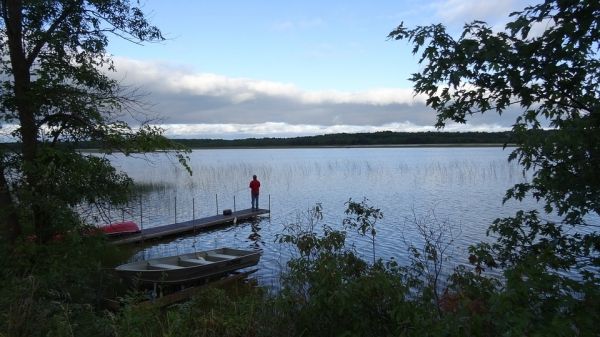If you fill a clear glass with lake water, chances are that the water has a slight yellow or brown color. The color is caused by dissolved organic carbon – a group of carbon compounds that wash into a lake from the soils around it when it rains or when snow melts. Dissolved organic carbon concentrations are increasing in lakes around the planet, in part because of climate change, but also due to other factors like reductions in acid rain. This causes the lake water to transition from relatively clear to a darker brown color.
“There are a several of good reasons why environmental scientists have expected browning to reduce the size of fish populations,” says David Seekell, Assistant Professor of Ecology in the Department of Ecology and Environmental Science at Umeå University in Sweden, and leader of the new study. “Darker colored water reduces light penetration which limits photosynthesis. This reduces the amount of food available for fish. Additionally, the volume of water in a lake with enough oxygen for fish to live actually decreases as the water gets darker, so there is less habitat for them too.”
However, there has been no change in fish populations in studies when researchers have experimentally clarified or darkened entire lakes. The new study explains why. The authors sampled fish populations and measured the depth and water color of 16 lakes in northern Sweden. They found that fish populations were lower in darker waters, but only for lakes with average depths in narrow range: 2-3.5 meters (6.5 – 11.5 feet). Whole-lake experiments have only occurred in lakes outside this range and this explains why these studies have not seen changes in fish populations. Relatively few lakes have average depths that fall in the 2-3.5 meter range. This suggests that browning will impact fish populations in fewer lakes than previously expected.
Read more at Umea University
Photo Credit: Sammy-R via Pixabay


